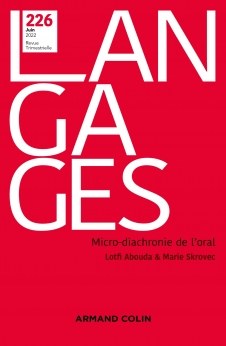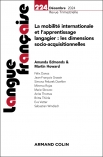
LANGAGES Nº 226 (2/2022)
Pour acheter ce numéro, contactez-nous
Recevez les numéros de l'année en cours et accédez à l'intégralité des articles en ligne.
Notre étude, qui traite du connecteur du coup, est basée sur l’exploration exhaustive d’un corpus oral échantillonné d’environ 1,3 million de mots, extraits des Enquêtes Socio-Linguistiques à Orléans (ESLO). Ses caractéristiques internes, conjuguées à une annotation syntaxique et sémantique affinée de chacune des occurrences de du coup, permettent de proposer une description de ses principales propriétés linguistiques et de cartographier son usage en fonction d’un certain nombre de variables, notamment diachroniques, diaphasiques et diastratiques. On parviendra, d’une part, à documenter, en « temps réel et apparent », l’essor quantitatif du connecteur et, d’autre part, à avancer des arguments en faveur d’un processus de pragmaticalisation en cours, qui transforme ce connecteur, marginal il y a encore quarante ans, en un nouveau marqueur discursif en vogue.
This study, which deals with the connective du coup in oral French, is based on an exhaustive exploration of a sampled oral corpus of approximately 1.3 million words, extracted from the Enquêtes Socio-Linguistiques à Orléans (ESLO). The internal characteristics of this corpus, combined with a precise syntactic and semantic annotation of each of the occurrences of du coup, allow us to propose a description of its main linguistic properties and to map its usage according to a number of variables, notably diachronic, diaphasic and diastratic. On the one hand, we will be able to document, in real and apparent time, the quantitative development of this connective and, on the other hand, to argue in favour of an ongoing process of pragmaticalization, which transforms this connective which was marginal forty years ago, into a new discourse marker in vogue.

